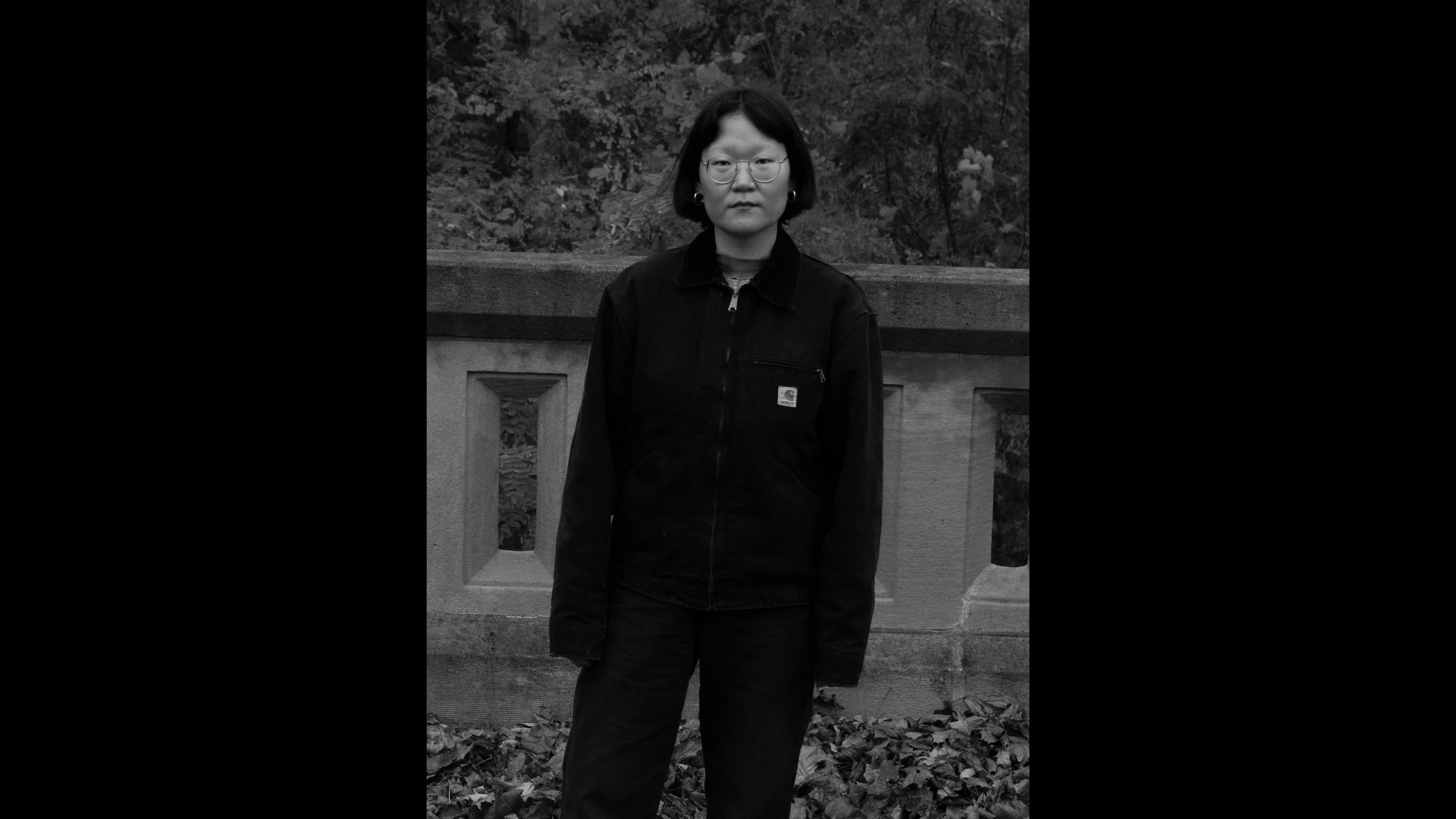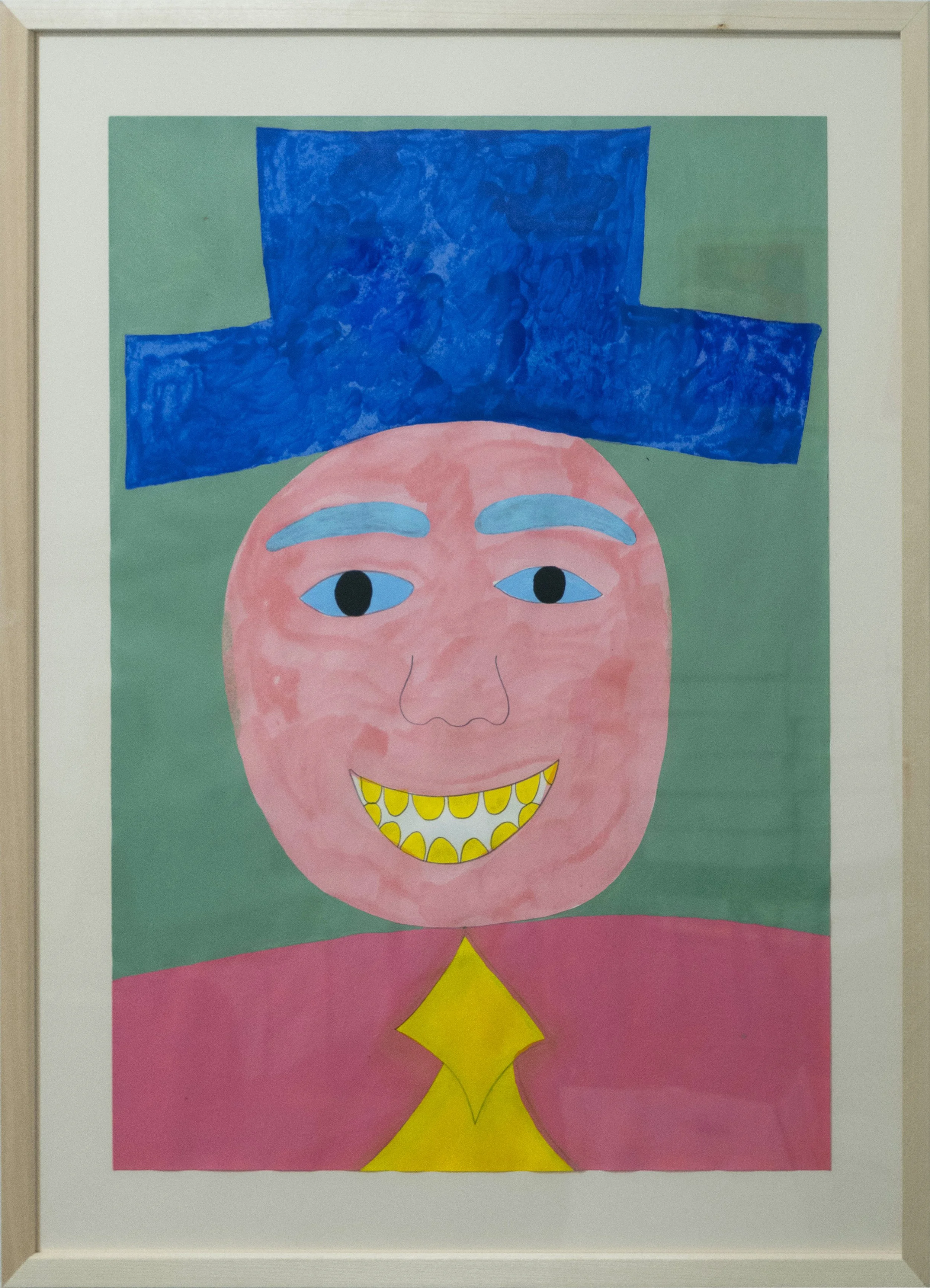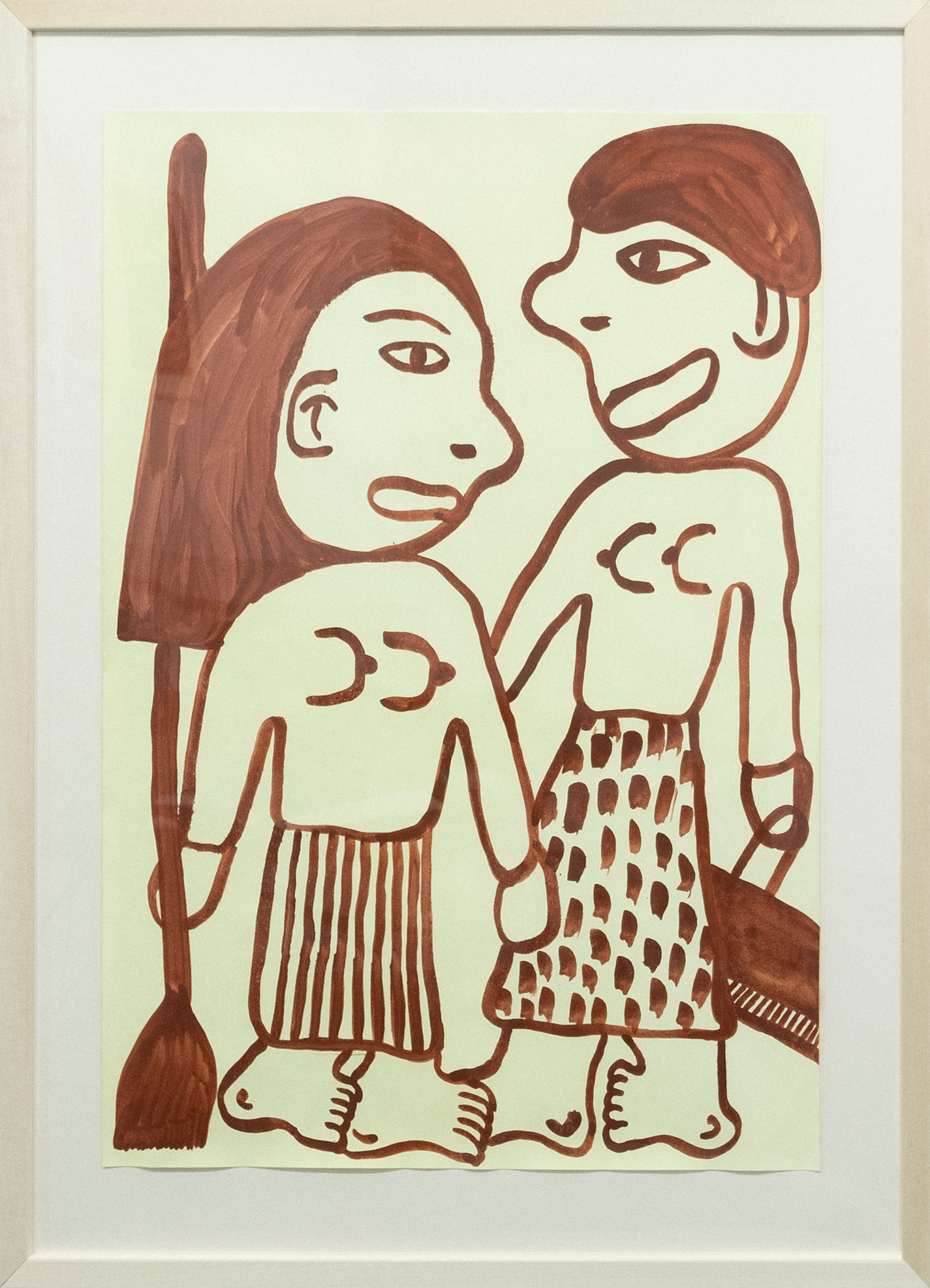PHYSICAL MEMORIES
Interviewed Nov 2024. Photographed by James Kramer. Written & Edited by Mila Fowler.
Nomka welcomed us to her apartment after we viewed her solo show As I Fall asleep to My Great Aunt’s Story About a Herder Boy, at Woodland Pattern in Milwaukee, WI. We spoke about different forms of art and her soft spot for drawing, learning that’s where her love for art stemmed. Nomka uses those drawings, along with paintings, text, and sculptures, to explore different memories and their permanence. Shaped by her childhood in Mongolia, her time in Germany, and her current life here, she brings a layered perspective to her craft, exploring different histories and feelings. Outside of her artistic pursuits, she has found her safe space in books, even founding a book club for AAPI called the Ping Pong Book Club.
3: How does the art community here differ from what you're used to in Germany?
N: I think every city has its art community and I do think it's all very similar in a sense. There are groups and cliques, but everybody does the same thing, so you are kind of forced to get to know each other on different levels. Overall wherever you are showing up is so important and it’s the kindest thing that you can do to support each other. After my artist talk yesterday at Woodland Pattern, a friend asked me how we could show up for you. I said you already are by showing up and that means so much to me. There's so much anxiety about having a show or wondering if people are gonna come, so then I think showing up is the kindest thing you can do. Just showing your face, getting familiarized. At Green Gallery, where I work, whenever we have an opening I do my best to talk to everyone to make them feel welcomed and that we are appreciative that they’re here.
3: Agreed, and congrats on your most recent gallery. Do you want to tell us a little bit more about As I Fall Asleep to My Great-Aunt's Fable of a Herder Boy?
N: Yeah, it's all works on paper, and it's all on the wall, so no sculptures. It's a series of 30 drawings and paintings on paper that I've been working on for the past two months. It's a lot. There's even more that didn't make it into this selection and a bunch that I'm still working on but, this body of work was really exciting for me. I'm working with a lot of memory. What does memory mean and what it means to forget memories. I was explaining it last night that I almost see the memory as a friend. This friend is either super reliable or unreliable and I'm having conversations with this friend and there are times where I'm like what are you talking about? It's almost fabricating things but then it depends on my mood and whether I want to accept them as they are or whether I want to challenge them. It's just this internal dance of, can I rely on these memories? Is it that important to rely on them too? I found myself working a lot more into abstraction and thinking of abstraction as a way of dealing with a loss of memory and maybe even coming to terms with this loss and accepting it as it is. I really liked that part, not having to fully know what it is, that was really fun. I felt like I could breathe and I could take the pressure off. Some of them are really abstract, some of them are very direct. Woodland Pattern, where I'm having the show, they've been around for a very long time. I think it's one of the staples in the Milwaukee art community. They mainly focus on literature and poetry. I went when Eileen Myles headlined there and I really enjoyed that experience.
3: I love Evolution by her.
N: Yeah, she's great. The reading was great. It was with another writer, Nate Lippens. Woodland Pattern is amazing at doing workshops, engaging with the community. The first half is a bookshop and then the second half is a gallery.
3: In your drawings specifically, we noticed it encompasses a lot of line work — very two dimensional, whereas your physical sculptures are 3D objects. What is the dynamic or the relationship between your ready-made work and your drawings?
N: Drawing is the foundation of my practice. I guess a comparison that I can make between Germany and the U.S. is that in Germany, you value drawing as much as any other practice like painting or in sculpture. I feel that in the states, it's kind of seen as a secondary practice in a way. In my practice, it's mainly drawing and sculpture but I also work with text and performance. The difference is the sculptures for me are a way of just evoking different things. I like the sculpture to be a way of interacting with the audience. It's a body, it's facing you, you can walk around it, you can interact with it differently than a drawing, where you only see one side. Drawing to me is a lot more intimate just because I've been doing it since I was four. The show at Woodland Pattern was vulnerable for me to show and I realized that I like hiding behind my sculpture a bit just because I can let it speak for itself and it demands attention and you and your time, whereas I felt like I never wanted that for my drawings. They can speak for themselves, so much like a reflection of who I am and what's going on within myself. I think the main thing is they convey different parts of me.
I'VE HAD MANY PETS FIT INTO JUGS AND POTS (2024) acrylic on paper, As I Fall Asleep to My Great Aunt's Fable of a Herder Boy, 18" x 24"
TURKISH DELIGHTS AND POWDERY FINGERS (2024) acrylic, graphite on paper, As I Fall Asleep to My Great Aunt's Fable of a Herder Boy, 18" x 24"
A HAMMER IS A GIRL'S BEST FRIEND (2024) acrylic, oil stick on paper, As I Fall Asleep to My Great Aunt's Fable of a Herder Boy, 18" x 24"
SO OBSESSIVE AND COMPULSIVE (2024) acrylic on paper, As I Fall Asleep to My Great Aunt's Fable of a Herder Boy, 18" x 24"
3: In your sculpture work, Cabbage Patch Kids, kettles, tennis racquets, and hangers. What do these mean to you and why are they incorporated in your practice?
N: It's always hard to say what they mean to me because so much of my practice is what you see in them. How does my work connect to you? That's what's important for me. I think it's always important because usually the artist is not going to be around to tell you. There might be an artist statement, or there might be some sort of description but, for me as an artist, it's way more interesting to hear what you see in it. What makes you think of a Cabbage Patch Kid or a cake mold?
3: Going back to books and things that you collect. What your biggest collection and what made you create Ping Pong Book Club? What does a typical meeting look like for you?
N: My biggest collection is probably books and I get obsessed with an artist and then I look up all the book they have published and if I see one that I like, I try to find one that's used and if I can't find a used one, I'll get it new. I've always loved paper — feeling it, choosing paper, and different colors. It's just really beautiful to me. I grew up making origami in school so, maybe that was also part of my artistry as a sculptor. Realizing that I can use this flat piece of material and make it into a sculpture.
3: We wanted to ask you about your experience at Yale Norfolk. What was it like and what was the process to getting in?
N: Yale Norfolk was amazing. It was one of the best experiences of my life, 100%. The way it works is Yale Norfolk School of Art, which is a summer program and it's only for rising seniors. It's for all the art schools in the US and each school, depending on how each school does it, professors nominate students and then they apply to Yale, but the way it is done at MIAD is you apply first internally. So within MIAD, a call goes out encouraging you to apply with your portfolio. Then the faculty chooses the top two or three people and every school can send two to three people to apply to Yale directly and then they decide whether they want you or not. It's a long process. There's also a limited number that they could choose. It's 26 I believe.
3: Do you have a favorite kitchen utensil?
N: Probably a spatula.
3: Haha.Why a spatula?
N: I use it all the time. I think it’s so versatile. You can stir with it, cut, fold, scrape, scoop. I’d probably say it’s my go-to in the kitchen.
Read more about Nomka in Triple Issue 1





